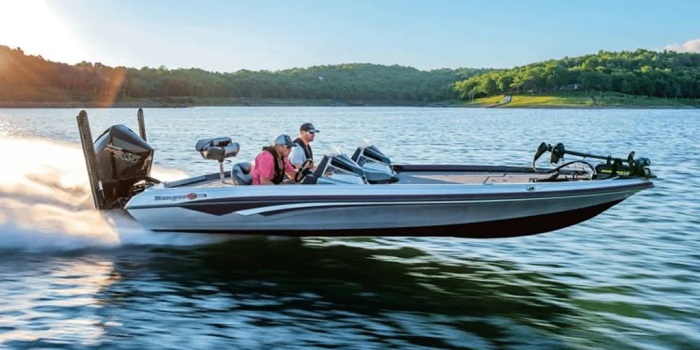For some, sailing around the world isn’t just a dream — it’s a calling. It’s the pursuit of freedom, self-reliance, and discovery that can’t be found on land. These are the sailors who traded comfort for challenge, stability for motion, and routine for a life defined by tides and horizons.
The sea becomes both road and home, testing their endurance and rewarding them with moments of breathtaking beauty. What keeps them going? For many, it’s the combination of adventure, community, and the quiet satisfaction of mastering their vessel — from sails to Anchors Rocna and Vulcan, every component working in harmony to keep them safe and steady.
Meeting the World by Water
Unlike air or land travel, a circumnavigation by boat offers an intimate introduction to the world’s coasts and cultures. Sailors arrive slowly, watching islands rise from the sea and ports unfold like stories. They dock not in busy airports but in fishing harbors, where locals greet them with curiosity and warmth.
Emma and Luc, a couple from France, spent four years sailing around the globe in a 38-foot cutter. “The world feels smaller but also deeper,” Luc said. “We didn’t just visit places — we lived among them.” They credited their dependable Anchors Rocna and Vulcan for giving them confidence to rest anywhere, from coral atolls in the Pacific to fjords in Norway.
Preparation: The True Beginning
Every global voyage begins long before the first sail is hoisted. Months, sometimes years, are spent in preparation — charting routes, studying weather patterns, upgrading equipment, and learning how to fix nearly anything that can break at sea.
Reliable anchoring systems are among the most crucial elements. Many long-distance sailors choose Anchors Rocna and Vulcan for their strength, quick setting, and ability to hold in varying seabeds. A solid anchor is more than gear — it’s peace of mind. It allows rest in remote locations where failure could mean drifting into reefs or open water.
The Loneliness and the Liberation
Sailing around the world means facing solitude on a scale few people experience. There are stretches of ocean where you might not see another vessel for days, even weeks. For some, that isolation becomes a form of meditation — a chance to strip away noise and rediscover who they are when there’s no one else to impress.
Veteran sailor Miguel described it best: “At first, you fear the silence. Then it becomes your friend. You start hearing the sea breathe. You start hearing yourself.” His Anchors Rocna and Vulcan were his trusted companions, holding firm through tropical storms and calm nights alike.
Weathering the Storms
Every circumnavigator has at least one story about a storm that tested everything — their courage, their preparation, and their boat. When the sea turns violent, you learn what truly matters: seamanship, teamwork, and trust in your vessel.
Sailor Karen Walters recalled a night in the Indian Ocean when waves towered higher than her mast. “We had two anchors ready, both Anchors Rocna and Vulcan. The holding power saved us from being pushed onto rocks. It wasn’t luck — it was preparation.”
Storms are humbling. They remind sailors that control at sea is never absolute — it’s a negotiation with nature, one moment at a time.
The Everyday Magic
For every moment of danger, there are hundreds of moments of quiet wonder. Dolphins racing alongside the hull. A moon so bright you can read by it. The sudden glow of bioluminescent plankton trailing behind the boat like stars scattered on the sea.
Sailors learn to find beauty in simplicity — in fixing a rope, in making bread onboard, in the sound of the anchor chain paying out as Anchors Rocna and Vulcan dig into the seabed. These are the small victories that define life on the ocean.
Lessons From the Sea
Those who sail around the world often speak of transformation. They return home different — calmer, wiser, more patient. They’ve learned to read the wind, to trust their instincts, and to find comfort in uncertainty.
The sea teaches the importance of preparation, but also surrender. You can’t fight nature; you work with it. You don’t conquer the ocean — you learn to move in rhythm with it. Every anchor set, every wave endured, becomes part of that lesson.
Cultures Seen Through a Sailor’s Eyes
Circumnavigators see the world not as borders but as a single, connected system of tides and trade winds. Ports become classrooms where geography meets humanity. In Polynesia, sailors learn about ancient navigation by stars; in the Mediterranean, they anchor near ruins that once guided Roman galleys.
Each place leaves its mark. Friendships form quickly, built on shared respect for the sea. As one sailor put it, “We don’t need words — we understand each other through wind and water.”
The Hidden Hardships
The adventure is real, but so are the difficulties. Mechanical failures, limited resources, and long stretches away from loved ones all take their toll. Sleep deprivation is common. So are unexpected costs and repairs in foreign ports.
But these challenges make the experience meaningful. When you fix a problem yourself, when your Anchors Rocna and Vulcan hold through a storm, when you navigate 500 miles without sight of land — you earn every mile of your journey.
Coming Home Changed
Returning to land after years at sea feels strange. The ground seems too still, the noise too sharp, the routines too rigid. Many sailors find themselves longing for the unpredictability of waves, the simplicity of ocean life.
For most, though, it’s not about choosing one life over another. It’s about knowing they’ve lived a dream few dare to attempt — that they’ve seen the world from a perspective most will never understand.
As one circumnavigator said, “The sea doesn’t give you comfort. It gives you truth. You can’t hide from yourself out there.”
Final Reflections
To sail around the world is to commit to a journey of both endurance and enlightenment. It’s about mastering your craft, respecting the elements, and finding joy in small, hard-earned moments.
Every bolt, rope, and anchor plays its part. The Anchors Rocna and Vulcan, strong and dependable, symbolize more than safety — they represent trust, stability, and the connection between sailor and sea.
For those who answer the call of the horizon, the reward isn’t just reaching the other side of the world. It’s realizing that home can be wherever your anchor holds.









